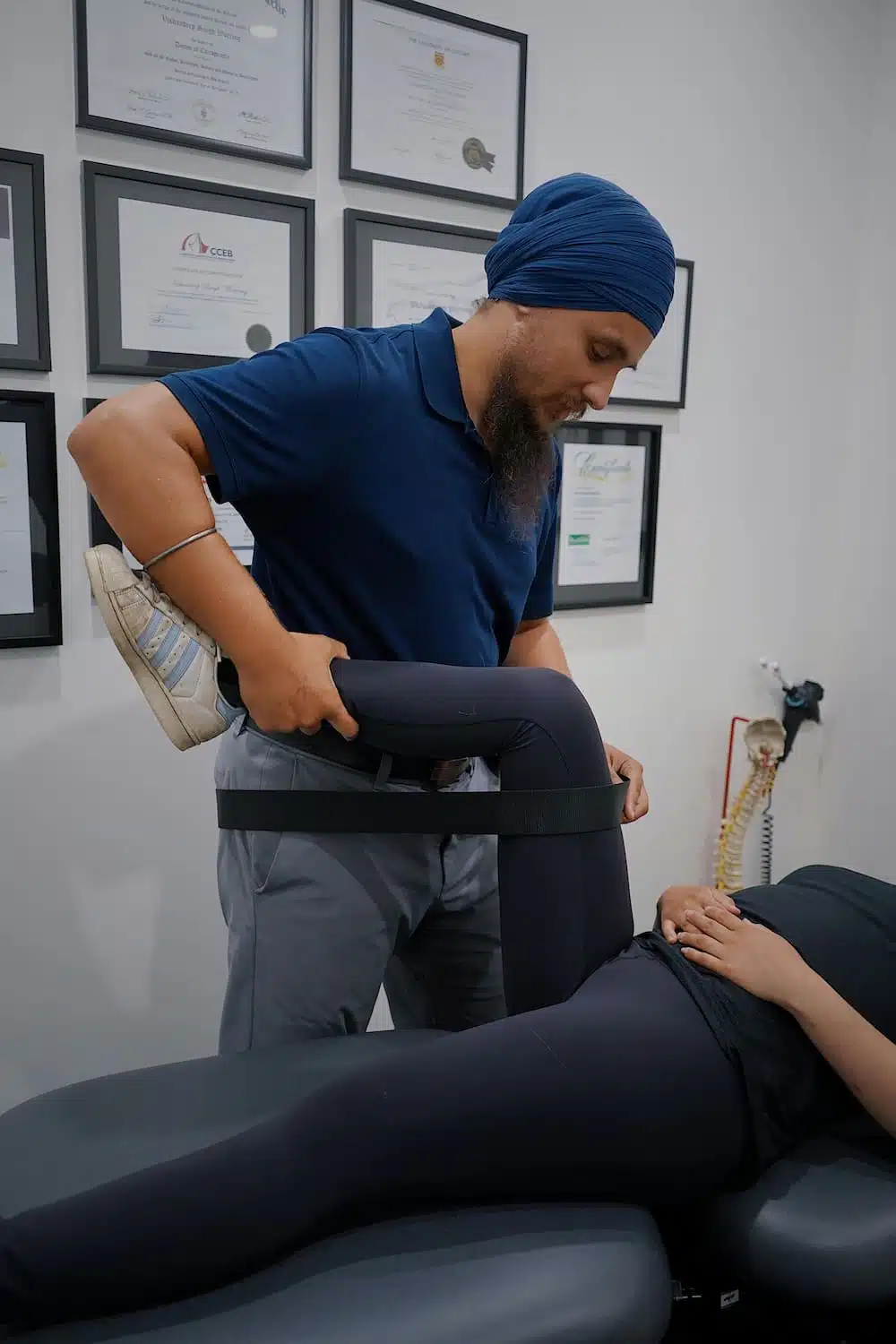Imagine you’ve just finished a challenging physical therapy session after a sports injury, feeling hopeful about your recovery. A pressing question then arises: does your insurance cover physical therapy?
Understanding your insurance coverage for physical therapy can impact your healthcare costs and access to treatment. Knowing your insurance coverage can help you avoid unexpected bills and make informed decisions about your healthcare.
This blog will help you understand insurance coverages for your physical therapy needs. Our comprehensive guide will cover everything from deciphering the types of insurance plans to offering practical tips to maximizing your benefits.
What Is Physical Therapy?
Physical therapy (PT) is a specialized treatment that improves movement, manages pain, and rehabilitates physical injuries. Physical therapists work with you through exercises, manual therapy, and education to restore your physical function, improve your quality of life, and prevent future injuries.
PT helps you regain strength and mobility regardless of managing a chronic condition or recovering from an injury. It's often used in treating a wide range of conditions, such as
- musculoskeletal injuries,
- back pain and spine injuries,
- sports injuries,
- arthritis,
- post-surgery recovery, and
- neurological conditions (such as Parkinson's disease or stroke).
Is Physical Therapy Covered by Insurance?
The short answer is generally yes. Most health insurance plans, like Medicare, offer some physical therapy insurance coverage. However, the scope of your coverage varies significantly from one plan to another.
Some plans offer full coverage, covering the entire cost of physical therapy after meeting your deductible and co-pay. Many plans cover only a portion of the cost (partial coverage), with the patient responsible for the remaining balance. Some only cover a limited number of physical therapy visits per year or require pre-authorization (limited coverage).
Review your policy documents to learn more about your insurance coverage. You can also contact your insurance provider directly. They can give you further details on your plan's coverage, limitations, and requirements to cover physical therapy services.
Types of Insurance Coverage for Physical Therapy
Health Insurance
Most health insurance plans cover physical therapy deemed medically necessary. This coverage often includes deductibles, co-pays, and coverage limits.
- Deductibles: Before your insurance begins to pay for covered services, you must pay a deductible, which you must pay out of pocket. For example, suppose your plan has a $1,000 deductible. In that case, you must pay that amount before your insurance covers any physical therapy sessions.
- Co-pays: You will pay a certain sum at the time of the appointment for services covered by your insurance. For instance, you might pay a $30 co-pay for each physical therapy session after meeting your deductible.
- Coverage Limits: Many insurance plans limit the number of annual physical therapy visits, often covering 20 to 60 sessions, depending on your plan and medical necessity.
The three common types of health insurance plans have varied effects on physical therapy coverage.
- Health Maintenance Organization (HMO): Under HMO plans, you usually have to designate a primary care physician (PCP) who will oversee your treatment and make recommendations to other medical professionals, such as physical therapists. Physical therapy coverage may be limited to in-network providers.
- Preferred Provider Organization (PPO): PPO plans give you greater freedom in selecting your medical providers, including the ability to see specialists without a referral. However, such plans often have higher premiums and co-pays.
- Exclusive Provider Organization (EPO): EPO plans combine aspects of HMO and PPO plans by providing a network of preferred providers and avoiding the need for specialist referrals.
Auto Insurance
Does your insurance cover physical therapy related to auto accidents? Your auto insurance may cover physical therapy costs, depending on policy and state laws. Coverage typically comes with Personal Injury Protection (PIP) or Medical Payments Coverage (Med Pay).
Many auto insurance policies have ceilings on medical expenses—meaning, they may only cover a limited amount for your physical therapy. You'll have to use your health insurance for further treatment once you've reached your auto insurance limit.
HSAs and FSAs
Health Savings Accounts (HSAs) and Flexible Spending Accounts (FSAs) offer tax-advantaged ways to pay for your physical therapy. HSAs let you save money tax-free for qualified medical expenses, including physical therapy. Contributions are tax-deductible, and funds can roll over from year to year.
Like HSAs, FSAs let you set aside pre-tax dollars for medical expenses. However, unlike HSAs, FSAs typically have a “use it or lose it” policy—meaning, funds must be used within the plan year. While HSAs and FSAs can help cover the cost of physical therapy, they aren't considered insurance and usually have limits on how much they can contribute each year.
How to Verify Physical Therapy Coverage
The complexities of health insurance and physical therapy can be daunting. You must have all the information you need to make the best decision about your physical therapy and insurance. Carefully reviewing your insurance coverage can help you avoid unexpected costs and access the necessary treatment.
- Coverage Limits: Look for information on the maximum number of physical therapy sessions or monetary limits covered by your plan per year or condition. This will help you understand the extent of your coverage and plan accordingly.
- Co-pays and Deductibles: Verify your out-of-pocket costs for physical therapy, including any co-pays and deductibles. Knowing these details will help you budget efficiently for your treatment.
- Pre-authorization: Some insurance plans require pre-authorization or prior approval before starting physical therapy. If so, you must work with your healthcare provider to obtain the necessary approvals or authorization before beginning treatment.
Learn to find relevant information in policy documents. The Summary of Benefits and Coverage (SBC) shows a concise overview of your plan's coverage, which may include details on physical therapy coverage.
Check the “Rehabilitation Services” or “Therapy Services” section for specific information on physical therapy coverage, including any limitations or requirements. It would help if you also referred to the “Exclusions and Limitations” section. This part of your policy outlines services you need to cover yourself or have specific restrictions.
Ask your insurance provider if you have difficulty finding the necessary information or have questions about your physical therapy coverage.
The Role of Physical Therapy Clinics in Insurance Matters
Physical therapy clinics like Hogan Spine & Rehabilitation Center can help you verify your insurance coverage. Our knowledgeable team will guide you and help ensure maximum coverage for your physical therapy.
Assistance with Paperwork
Completing and submitting insurance forms can be a daunting task, especially when dealing with complex medical conditions or injuries. Our clinic has experienced staff who are well-versed in the intricacies of insurance paperwork. They can help you
- fill out the necessary forms accurately;
- gather required documentation, such as physician referrals or pre-authorization approvals;
- submit claims to insurance providers on time; and
- follow up on any outstanding claims or issues.
Navigating Coverage
Understanding the details of physical therapy insurance coverage can be challenging, especially regarding physical therapy. Our clinic can guide you by
- explaining the specifics of your insurance plan, including coverage limits, co-pays, and deductibles;
- helping you understand our clinic’s financial responsibility for treatment;
- offering suggestions on how to maximize your insurance benefits; and
- advocating on your behalf when insurance coverage is denied or limited.
With our clinic's assistance in insurance matters, you can increase the likelihood of your insurance claims being approved and processed efficiently, leading to less stress and confusion. You'll also have greater transparency and communication throughout the claims process.
Takeaway
Does your insurance cover physical therapy? Understanding your insurance coverage and verifying policy details for physical therapy can prevent unexpected fees. It can also help you manage your healthcare costs, ensuring you can focus on your recovery without worrying about money.
Take the time to review your insurance policy carefully. Look for coverage limits, co-pays, deductibles, and any pre-authorization requirements. If you have questions, don’t hesitate to contact your insurance provider for clarification. Additionally, contacting your physical therapist can provide valuable insights into how to use your insurance benefits best.
Hogan Spine & Rehabilitation Center commits to exceptional assistance with your health insurance and physical therapy. Contact us to check your coverage details before booking a consultation.







